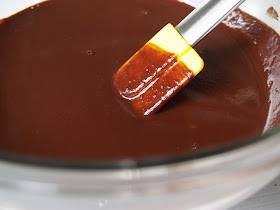Like fiddlehead ferns, ramps have a short lived season. Whenever they arrive at the farmer's market I always grab a bunch without hesitation. With some steaks in the fridge, I thought ramp butter would be a perfect companion. Compound butters or beurre compose are fancy terms for butter mixed with additional ingredients such as herbs, spices, or other aromatics. They are extremely simple to make but in my opinion, can transform a steak from average to extraordinary.
Ramps, though becoming popular in upscale restaurants, are simply perennial wild onions found across the eastern part of North America. If you've never tasted ramps before, they are best described as garlicy mild green onions. They are popular from the American south all the way up to Canada. It's no wonder, as these seasonal "weeds" really pack a punch.
I love ramps sauteed with butter or with scrambled eggs and omelettes. But the great thing about adding them to butter is that the butter can be frozen for a number of months. This allows you to enjoy ramps much longer than their season will allow and gives you the option of cutting off only what you need, while preserving the rest. I love having it on hand throughout the spring and early summer. Try it melted on steaks or spread on bread or toast.
RAMP BUTTER
Ingredients:
1/4 lb. ramps (about 20 ramps)
1/2 lb. (2 sticks) unsalted butter, at room temperature
1/2 tsp. sea salt, or more to taste
Thinly slice the ramp bulbs and set aside. Chiffonade the leafy greens, slicing them into 1/8-inch strips. Set aside.
Add 2 tablespoons of the butter to a medium saute pan, and melt over medium heat. Once the butter has melted and become frothy add the ramp bulbs and saute, stirring often, until lightly browned, about 1 minute. Stir in the ramp greens and saute until the leaves have wilted, about a minute more. Remove the pan from heat and transfer the sauteed ramps to a plate to cool, about 15 to 20 minutes.
Add the remaining butter to a small mixing bowl and using a rubber spatula, fold in the sauteed ramps. Stir in the salt, adding more to taste if necessary. Turn the butter out onto a double layer of plastic wrap (or a sheet of waxed paper or parchment paper). Shape the butter into a log and roll it up in the plastic or paper. Use a dough scraper or ruler to shape the dough into a long log measuring about 8-inches long. Twist the ends of the plastic or paper to seal in the butter. Refrigerate until the butter is cold, about 45 minutes. Cut the butter into 1/4-inch rounds and use as a condiment on steaks, bread, or toast. The ramp butter can be refrigerated for up to 1 week or frozen for up to 2 months for longer storage.




































